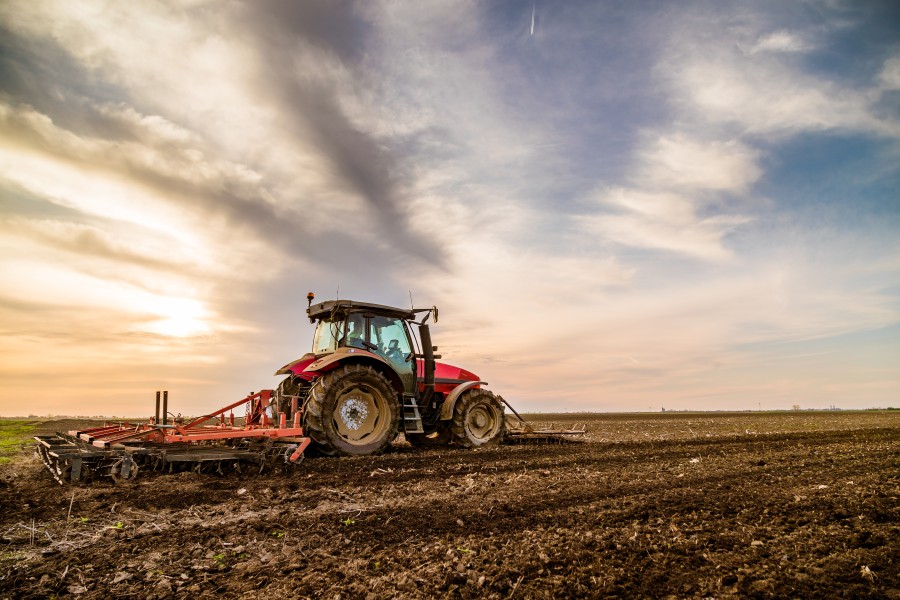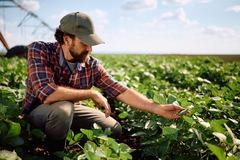Inside PepsiCo’s pilot to redefine farming incentives in Brazil’s Cerrado region
Key takeaways
- PepsiCo’s new Cerrado pilot introduces a hybrid incentive model that pays farmers both upfront for adopting regenerative practices and later for verified environmental outcomes.
- The initiative aims to scale from 7,000 to 30,000 acres, addressing regional risks like soil degradation, deforestation pressure, and climate vulnerability.
- The model serves as a potential blueprint for industry-wide transformation, emphasizing traceability, direct farmer engagement, and alignment with global sustainability goals.
PepsiCo is collaborating with Griffith Foods and Milhão to launch a direct farmer incentive pilot program, aiming to advance regenerative agriculture in Brazil’s Cerrado region — one of the world’s most biodiverse savannas, producing substantial volumes of corn and over 60% of Brazil’s soybeans.
The region, which faces mounting threats from deforestation, soil degradation, and climate stress, is one of the highest-impact sourcing areas for PepsiCo.
The F&B giant talks to Food Ingredients First about this strategically important initiative, which introduces a hybrid Payment for Practice and Payment for Outcomes model, directly compensating farmers for adopting regenerative agriculture practices such as composting, biological inputs, and reducing chemical fertilizer use.
Farmers receive upfront payments to offset the cost of sustainable inputs along with performance-based bonuses for reducing agrochemical applications throughout the season.
What made this region uniquely compelling for PepsiCo’s regenerative agriculture initiative versus other sourcing regions?
PepsiCo: The Cerrado is one of the most biodiverse savannas in the world, but it’s also one of the most at-risk agricultural landscapes. It produces over 60% of Brazil’s soybeans and significant volumes of corn, making it critical to both regional and global food security. For PepsiCo, it is also one of our highest-impact sourcing regions for corn, and thus represents a meaningful opportunity to demonstrate scalable, farmer-led climate solutions where it matters most. Launching a regenerative agriculture pilot here enables us to proactively address soil degradation, deforestation risk, and climate vulnerability in a way that’s directly aligned with our sourcing footprint and long-term business resilience.

Cerrado is not the only region where we are activating our regenerative agriculture initiative. In 2024, we were proud to support over 3.5 million acres where we supported improved outcomes against carbon, soil health, watershed health, and biodiversity according to our regenerative agriculture guidelines.
The pilot aims to scale from 7,000 acres to 30,000 acres within three years. What are the biggest operational or supply chain risks you anticipate in achieving that scale-up?
PepsiCo: Scaling regenerative agriculture in any region should be done in a way that addresses the risks farmers have for their longevity. We believe this program will provide farmers with value against these challenges to their daily operations. We know that new initiatives and changes can feel challenging — particularly around agronomic support, cost of transition, and localized climate impacts. In the Cerrado, two things we are thinking about are farmer adoption hesitancy due to upfront costs or yield uncertainty, and supply chain complexity in measuring and verifying both practices and outcomes. PepsiCo is mitigating these risks by offering direct financial incentives through both upfront payments and outcome-based bonuses, and deploying tailored technical assistance to ensure practices are both scientifically grounded and locally relevant. Also, we are leveraging our updated Climate Resilience Platform, an open-access planning tool for agricultural adaptation and risk mitigation.
How does this direct farmer incentive model align with broader trends of traceability, sustainability, and consumer expectations in F&B?
PepsiCo: PepsiCo’s hybrid “Payment for Practice and Payment for Outcomes” model reflects growing demand across the F&B industry for greater traceability of environmental outcomes, direct engagement with growers instead of reliance solely on certifications, and actionable climate solutions that align with Scope 3 emissions reduction goals. This model advances transparency and accountability, both of which are increasingly important to consumers and investors. It also directly supports our broader commitment to sustainable sourcing and regenerative agriculture across 10 million acres by 2030.
In what ways do you see this pilot as a “blueprint for industry-wide transformation?”
PepsiCo: The Cerrado pilot introduces a model that balances economic incentives, scientific rigor, and cross-sector collaboration. What sets it apart is the direct farmer compensation that lowers the financial barrier to entry, a performance-based component that rewards verified environmental outcomes. It is a pre-competitive collaboration among PepsiCo, Griffith Foods, and Milhão, which is essential for driving systemic change. Early interest from others in the landscape signals strong potential for replication across other regions and crops. PepsiCo stresses its commitment to sustainable sourcing and regenerative agriculture across 10 million acres by 2030.
PepsiCo stresses its commitment to sustainable sourcing and regenerative agriculture across 10 million acres by 2030.
The model includes both “Payment for Practice” and “Payment for Outcomes” for farmers — can you walk us through how these two components work in practice on the ground?
PepsiCo: Payment for Practice: Farmers receive upfront payments to help cover the costs of regenerative inputs, such as compost, biologicals, and tools, thereby reducing synthetic fertilizer use. Payment for Outcomes: Additional bonuses are awarded based on measured reductions in agrochemical use or other performance indicators such as improvements in soil health or GHG emissions. This dual structure builds both trust and accountability into the model as it helps farmers bridge the transition period while creating incentives for continuous improvement.
What has been the response of the local farming community to this incentive model so far?
PepsiCo: Initial feedback has been positive. Farmers see the model as helping to offset one of the biggest barriers to regenerative agriculture: financial risk. Many have also expressed interest in scaling these practices beyond the pilot, and additional members of the Cerrado agricultural community are exploring participation. We’ve also found that the model is resonating because it is not prescriptive. It gives farmers flexibility in how they implement practices, and how to mitigate the challenges they face of soil degradation and yield disruption, supported by local agronomic guidance and trusted partners.
One of your goals is to improve soil health, reduce GHGs, and build climate resilience in the region. How are you defining and measuring each of those outcomes?
PepsiCo: PepsiCo evaluates these outcomes through soil sampling and analysis (including soil organic matter, nutrient content, and structure), as well as agrochemical application tracking and remote sensing. These are GHG modeling tools, informed by industry best practices and verified methodologies. We use a mix of on-farm data, satellite imagery, and science-based metrics as defined in our Regenerative Agriculture Guidelines and Climate Transition Plan.
How does this project tie into PepsiCo’s broader sustainability strategy, particularly the ambition to spread regenerative practices across 10 million acres by 2030?
PepsiCo: This pilot is a direct contribution to our ten million-acre goal under our Positive Agriculture pillar within the pep+ strategy. We’ve already delivered regenerative, restorative, or protective practices across more than 3.5 million acres globally, and pilots like this are critical to scaling that momentum — especially in climate-sensitive sourcing regions.
What are the next steps after the three-year pilot concludes? How do you plan to replicate the model elsewhere?
PepsiCo: We will continuously evaluate best practices, successes, and learning to be able to support food system transformation and farmer resilience around the world. As we learn, we will determine how to apply learnings to expand the model across other crops, geographies, and regions, including the Cerrado. We look forward to exploring expansion opportunities in regions where we have sourcing and can support a network of farmer-facing organizations that help farmers adapt to the challenges they face every day and achieve strong environmental outcomes.














